I took the CKA exam and I needed to work with Daemonsets for quite a while there. Since it is much faster to do everything with kubectl instead of creating yaml manifests for k8s resources, I was wondering if it is possible to create Daemonset resources using kubectl.
I know that it is NOT possible to create it using regular kubectl create daemonset at least for now. And there is no description of it in the documentation. But maybe there is a way to do that in some different way?
The best thing I could do right now is to create Deployment first like kubectl create deployment and edit it's output manifest. Any options here?
